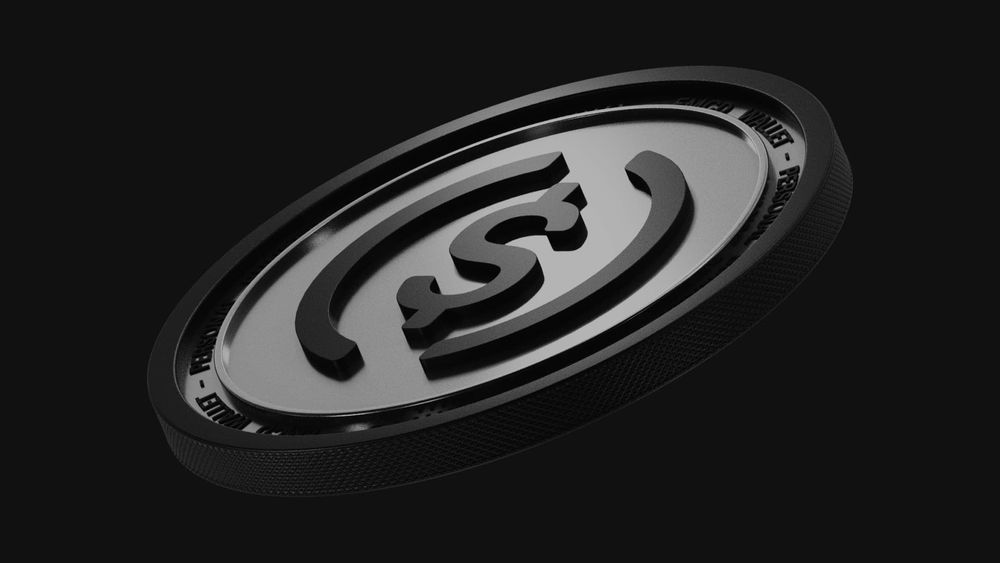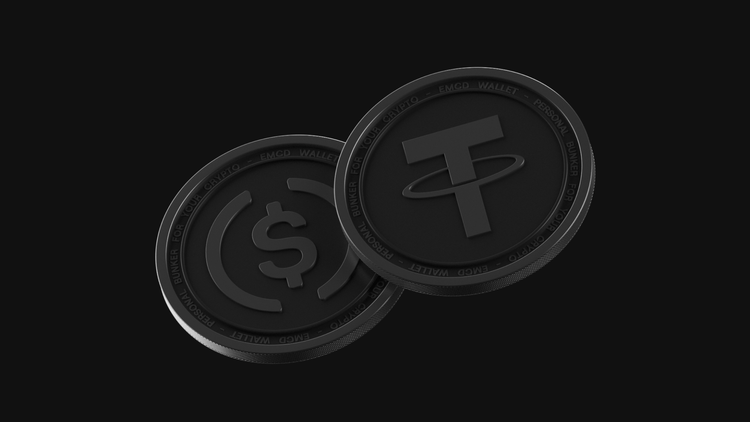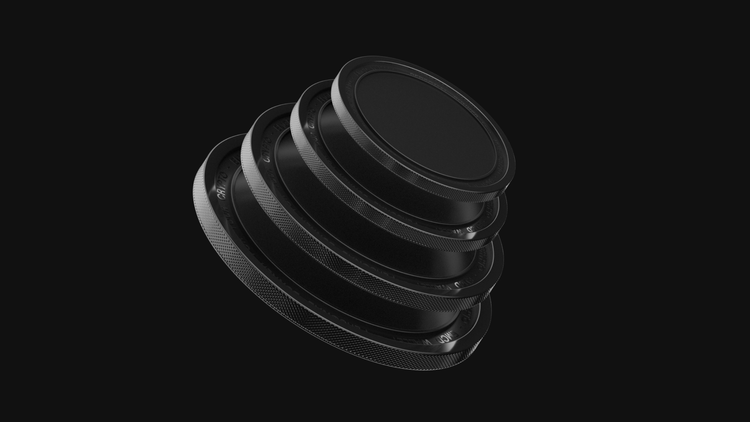USD Coin: Definition and Complete Guide

USD Coin – USDC is a tokenized asset fully backed by US dollars. Often referred to as a stablecoin, USDC maintains a 1:1 peg to the dollar’s value. This stablecoin is issued by Circle, a trusted fintech company.
Let’s dive deeper into this topic and find out what USDC crypto is.
What’s a Stablecoin?
Stablecoins are digital currencies pegged to reserve assets like the US dollar or gold. Designed to offer stability, these coins serve as an alternative to the high volatility of popular cryptocurrencies like Bitcoin.

Thanks to their peg to reserve assets, stablecoins have become a form of digital money that is ideal for everything from everyday transactions to transfers between exchanges.
Combining the traditional financial stability and the flexibility of digital assets has proven to be a highly popular concept. Stablecoins like USD Coin have attracted billions of dollars in investments, making them one of the most reliable options for storing value and trading in the crypto industry.
How USDC Differs from Other Stablecoins
Stablecoins can be divided into four main categories:
- Fiat-Backed Stablecoins
These are pegged to fiat currencies or other reserve assets and are always centralized. Examples include Tether (USDT) and USDC. - Crypto-Backed Stablecoins
These are pegged to the cryptocurrency asset value rather than traditional money. A well-known example is MakerDAO. - Algorithmic Stablecoins
These rely on software-driven economic models to maintain price stability without collateral backing. A notable example is Terra USD. Fun fact: In May 2024, UST lost its dollar peg, causing its supporting token, LUNA, to crash by nearly 90% in just 24 hours. - Hybrid Stablecoins
These use a mix of different stabilization approaches. An example is Carbon.
If you’re wondering what USDC is, you should know that it falls into the first category of fiat-backed stablecoins, making it a centralized digital asset. In general, all projects within this category operate similarly, with only minor differences.
Fiat-backed stablecoins undergo regular audits and are fully backed by US dollars. The main differences between them typically lie in payment policies, but their overall business model remains the same.
What Backs USDC
According to its issuer, USDC is backed by fiat money and US government bonds, ensuring its 1:1 peg to the dollar.
The stablecoin’s reserve assets are held in segregated accounts within regulated US financial institutions. These accounts are independently audited and publicly verified by the accounting firm Grant Thornton, adding an extra layer of transparency and trust.
USDC is safe since it isn’t issued or backed by the US government. Instead, it operates as an open-source project, meaning that anyone can contribute to its development and improvement. This transparency allows for continuous innovation while maintaining trust in its stable value.

Who Issues USDC
The USD Coin history in September 2018. The stablecoin is managed by the Centre consortium, which was founded by Circle and the cryptocurrency exchange Coinbase.
Both platforms promote USDC as a regulated stablecoin built on blockchain technology, providing security, transparency, and compliance with regulatory standards.
In May 2022, Circle announced that it would provide weekly reports on the reserves backing USDC. This initiative is aimed at strengthening trust in the stablecoin by revealing the exact amount of actual funds supporting it, ensuring greater transparency and accountability.
What Guarantees USDC's Stability
Circle guarantees that each USDC token is fully backed by one US dollar. The process of converting US dollars into USDC tokens is known as tokenization.
Tokenizing USD into USDC involves a three-step process:
- The client transfers fiat currency to the stablecoin issuer's account
- The issuer creates an equivalent USDC amount using smart contracts
- The client gets the stablecoins, while the exchanged US dollars are stored in reserves
Exchanging USDC for US dollars follows the same steps but only in reverse.
Like many other stablecoins, USD Coin operates on the Ethereum blockchain using the ERC-20 standard. Additionally, USDC is compatible with other blockchains like:
- Algorand
- Solana
- Stellar
- TRON
This cross-chain compatibility enhances the USDC's flexibility and usability across various platforms.
USDC Use Cases
If you’re wondering what USDC is used for, let’s look through several ways it can be utilized:
- Hedging against crypto market volatility
By buying USDC, crypto investors stabilize their portfolios' value during market fluctuations, acting as a buffer against volatility. - Token valuation on crypto exchanges
Tokens traded on exchanges can be priced in fiat money using USDC, making it easier to assess their value in real terms. - Investments stability
USDC can be used for investing in companies or funds. It also serves as a reliable asset for lending purposes, offering stability in uncertain times. - International transfers
USDC is perfect for cross-border payments. The receiving party doesn’t need to worry about market fluctuations, and it can be stored without requiring traditional bank accounts. - US Dollar reputation
Investors outside the US who wish to invest in USD can include USDC in their portfolios, providing exposure to the US dollar without direct currency exchange. - Crowdfunding and investment
Startups and nonprofits can use USDC to raise funds from global investors during crowdfunding campaigns. Since USDC is safe and stable, it ensures that the funds’ value raised won’t fluctuate over time. - Multiple blockchains support
As USDC is compatible with blockchains like Solana and Algorand, it can be used to integrate payment systems and applications across different platforms, enhancing its cross-chain usability.
These diverse use cases make USDC a highly flexible and trusted asset in the crypto space.
USDC coin Pros and Cons
Let’s take a look at USDC's advantages:
- Low volatility
- Fully backed by US-regulated reserve assets
- Hedge against inflation
USD Coin disadvantages:
- No price growth
- Not immune to dollar inflation
- Risk of asset freezes
Who Owns USDC
The stablecoin USDC is issued by Circle, a fintech company founded in 2013 by entrepreneurs Jeremy Allaire and Sean Neville.

Circle is a blockchain company specializing in peer-to-peer payment technologies. Headquartered in Boston, Massachusetts, Circle provides financial solutions that bridge traditional finance and blockchain. Its Circle Pay platform allows you to store, send, and receive fiat money seamlessly.
Until December 2016, Circle Pay functioned as a crypto wallet for Bitcoin trading. The company later discontinued these services, stating that it was no longer a consumer Bitcoin exchange and would instead focus on global social payments and next-generation blockchain technologies.
Additionally, Circle is backed by Goldman Sachs, making it one of the most notable cryptocurrency startups with support from a major investment bank.
Who Owns USDC
The USDC issuance is managed by Centre, a private consortium founded by Circle and Coinbase. Since the Centre operates independently of any government, USDC isn’t classified as a Central Bank Digital Currency but remains a regulated, fully backed stablecoin.
Centre’s open stablecoin framework enables fiat money to seamlessly integrate with smart contracts, bridging traditional finance with blockchain technology.
USDC is issued by licensed financial institutions, which are responsible for maintaining the real-world reserves that back the stablecoin’s value, ensuring its stability and reliability.
USDC issuers are required to regularly disclose information about reserve assets, ensuring full transparency. An independent accounting firm conducts monthly attestations to verify that USDC is fully backed.
Centre is open to partnerships, allowing other regulated institutions to issue USDC, further expanding its adoption in the financial ecosystem.
Where to Store and Buy USDC
Buying USD Coin is easy since it’s widely supported across major cryptocurrency exchanges, including Gemini, Coinbase, and Kraken.
If you're curious about what USDC mining is, it's important to know that stablecoins can’t be mined.
USDC is a valuable asset for both individuals and businesses that need a digital dollar for transactions. It’s user-friendly and can be used for sending, receiving, and even lending, making it a versatile choice in the crypto ecosystem.
Since USDC is an ERC-20 token built on the Ethereum blockchain, it can be stored in any Ethereum-compatible wallet. You can securely store, send, earn income, and withdraw your USD Coin easily with EMCD Wallet. Choosing this reliable platform is your best option to manage your USDC.
Is Investing in USDC Risky?
While USDC is considered less volatile than other cryptocurrencies due to its status as a stablecoin, investing in USDC still carries risk. Stablecoins, including USDC, are under increased scrutiny from regulatory bodies like the US Securities and Exchange Commission.
As US lawmakers work on creating regulations for stablecoins and their issuers, there’s a possibility that new legal frameworks could impact the USDC use and value in the future.
It’s worth noting that USDC adheres to current regulations and is likely to face fewer challenges with any future regulatory changes compared to other stablecoins. This regulatory compliance gives it a more stable foundation, making it a relatively safer option within the evolving cryptocurrency landscape.
Since USDC is managed by multiple companies, the primary risk lies in the potential bankruptcy of one of them. According to Circle, USDC is always redeemable 1:1 for US dollars. But if Circle or Coinbase were to go out of business, there would be no guarantee that USDC would maintain its value.
F.A.Q.
Are USDT and USDC the same?
Although both USDT and USDC are both stablecoins pegged to the US dollar, they have key differences. The main distinction between them lies in their issuers: USDT (Tether) is issued by Tether Ltd, but USDC is issued by Circle.
Is USDT safer than USDC?
USDC is generally considered a safer asset compared to USDT. This difference primarily comes down to the principles of the issuing companies. Circle, which issues USDC, follows strict transparency standards and conducts regular audits to ensure the coin is fully backed by reserves. Tether, the USDT issuer, often faces questions about its reserve backing and transparency issues, raising concerns about its reliability and trustworthiness.
What affects the USDC exchange rate?
Since USDC is a stablecoin pegged to the US dollar, the primary factor affecting its value is the exchange rate of the US dollar itself. Market conditions and trust in the issuer can also influence the USD Coin price.




